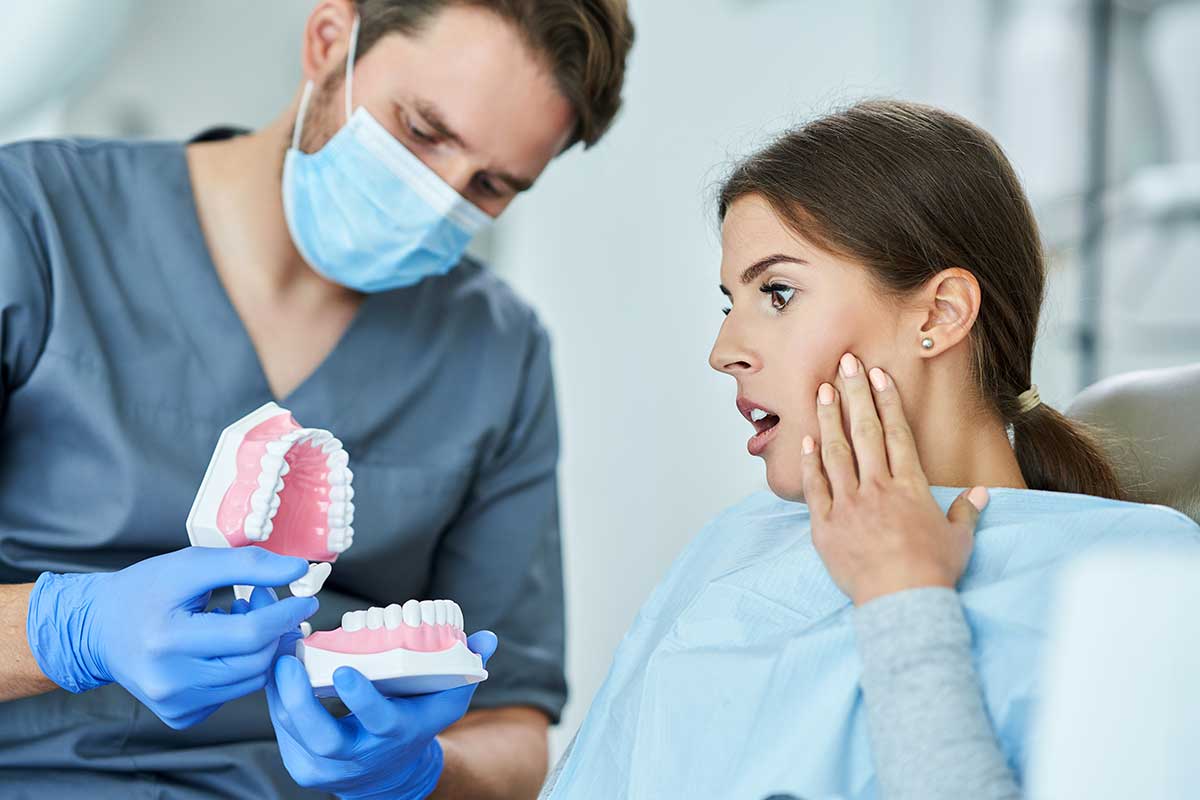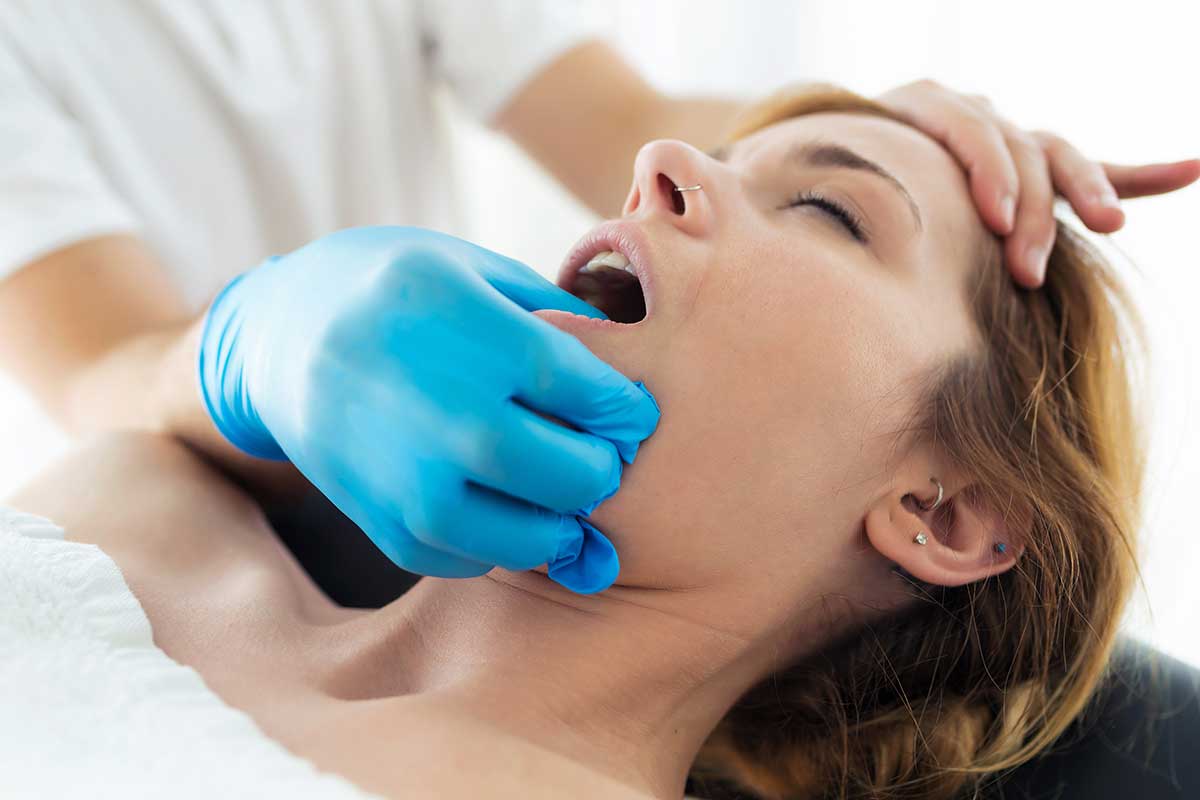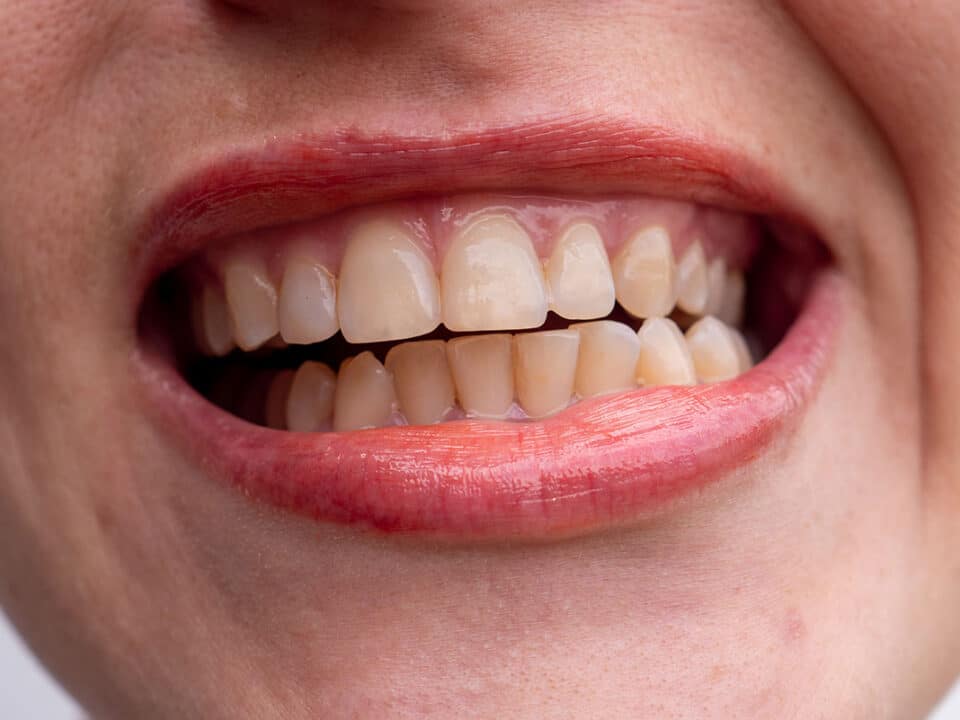Jaw pain can be a nuisance and significantly impact your daily life. It can stem from various sources and might indicate underlying issues that need professional attention. Wondering why your jaw hurts or what to do about jaw pain? Your dentist can be a crucial ally in diagnosing and treating this discomfort. Let’s dive into how your dentist can help treat jaw pain effectively.
Jaw pain affects millions, interfering with eating, speaking, and sleeping. Ignoring it isn’t just uncomfortable—it’s risky. Seeking professional help isn’t optional; it’s necessary. Your dentist isn’t just about teeth; they’re your first line of defence in diagnosing and tackling jaw pain. Let’s explore how they can help.
Table of Contents
Understanding the causes of jaw pain
Jaw pain can originate from several sources, each with unique challenges. Common causes include:
Teeth grinding (Bruxism)
Results in muscle fatigue and joint strain.
TMJ disorders
Frequently causes muscle fatigue and joint strain similar to bruxism.
Arthritis
Can cause significant discomfort in the jaw.
Dental infections
Signal the need for urgent care to prevent further complications.
Less frequently, jaw pain can be due to:
• Neuralgias
• Tumors
• Cysts
These conditions often require specialist intervention.
Recognizing the root cause is the first step in effective treatment.
Jaw pain symptoms to watch for
Jaw pain often presents as an aching discomfort that can make chewing and speaking challenging. You might also notice your jaw making uncomfortable clicking or popping sounds, which can be alarming. Some experience tightness in the facial muscles, radiating to the ear or neck.
How dentists diagnose jaw pain

If you’re wondering, “Why does my jaw hurt?” or are experiencing jaw pain on just one side, these are clear indicators that it’s time to seek professional help. Identifying these symptoms early can prevent further complications
Initial examination for jaw pain complaints
Patient history: The first step your dentist will take is to gather a detailed patient history. This typically involves asking questions about your lifestyle, eating habits, stress levels, and any previous medical conditions. Your dentist may also inquire about habits like teeth grinding or clenching and whether you’ve experienced any injuries to your jaw or face.
Physical examination: Next, the dentist will conduct a thorough physical examination. This involves palpating (feeling) the muscles around your jaw for signs of tenderness, swelling, or any unusual lumps. Your dentist will also check for the range of motion in your jaw and listen for any clicking or popping sounds when you open and close your mouth.
By combining a detailed patient history with a focused physical examination, your dentist can gather critical information that will aid in diagnosing the source of your jaw pain.
Diagnostic tools
Your dentist has a variety of diagnostic tools at their disposal. Diagnostic imaging and assessments are crucial for identifying the root cause of jaw pain.
Imaging techniques
Imaging techniques are often the first step in getting a clear picture of what’s causing your jaw pain:
• X-rays: Reveal issues with the teeth and bones.
• CT Scans: Provide detailed images of the jaw’s soft tissues.
• MRIs: Offer comprehensive views of soft tissue structures.
These techniques help your dentist identify problems that aren’t visible during a standard examination.
Dental assessments
In addition to imaging, dental assessments play a crucial role in diagnosing jaw pain:
• Bite Analysis: Determines if misaligned teeth contribute to jaw pain.
• Dental Wear Patterns: Checks for signs of teeth grinding or other habits that may strain the jaw.
Treatment options offered by dentists for jaw pain

Non-surgical treatments for jaw pain
Mouthguards and splints
Mouthguards and splints are essential non-surgical treatments for alleviating jaw pain.
• Night guards: Often worn during sleep, night guards help prevent teeth grinding (bruxism) and relieve the pressure on the jaw. They act as a barrier, reducing wear on teeth and minimizing muscle strain overnight.
• Dental splints: These devices stabilize the jaw, ensuring it stays in a more natural position. They help reduce strain on the temporomandibular joint (TMJ) and can alleviate pain by correcting misalignment issues.
Both options are custom-made by your dentist for optimal fit and effectiveness.
Physical therapy for jaw pain
Jaw pain can sometimes be alleviated through targeted physical therapy.
• Jaw exercises: Regular exercises to strengthen and stretch the jaw muscles can make a big difference. Simple routines like opening and closing your mouth slowly or moving your jaw side-to-side can gradually improve muscle function and reduce pain.
• Massage therapy: Massaging the jaw muscles can help ease tension and improve blood circulation to the affected area. Focused massage around the jawline, temples, and neck can significantly reduce discomfort and promote relaxation.
Physical therapy offers a noninvasive, low-risk way to manage jaw pain. Dentists often recommend it as part of a comprehensive treatment plan.
Medication used to treat jaw pain
• Pain relievers: Options like acetaminophen or ibuprofen to manage pain symptoms.
• Muscle relaxants: Helps to ease tension in the jaw muscles and prevent spasms.
• Anti-inflammatories: Often prescribed to reduce inflammation and associated pain.
Surgical treatments for jaw pain
Arthroscopy
Arthroscopy is a minimally invasive surgery that uses a small camera and instruments to examine and treat issues within the jaw joint. It’s less invasive than open-joint surgery and often results in quicker recovery times.
Open-joint surgery
For more complex cases, open-joint surgery may be necessary. This procedure involves repairing or replacing parts of the jaw joint to correct structural problems. It’s usually considered when other treatments have failed.
Arthrocentesis
Arthrocentesis is a minimally invasive procedure often used to treat jaw joint issues, particularly TMJ disorders. The process involves inserting needles into the joint space and flushing it out with a sterile solution. This helps to remove inflammatory debris and reduce swelling.
While it sounds complex, it’s a relatively straightforward procedure that can significantly relieve pain and improve joint function. If non-surgical treatments haven’t worked, arthrocentesis might be your next best option. Consult your dentist to see if this could be the right step for you.
Lifestyle and home remedies that can help reduce jaw pain and stiffness

Diet modifications
Switching up your diet can significantly lessen jaw pain. Aim for a soft diet, such as:
• Mashed potatoes
• Yogurts
• Smoothies
These foods minimize the need for extensive chewing, reducing strain on your jaw.
To further prevent discomfort, avoid chewy and hard foods like:
• Gum
• Steak
• Crusty bread
Such foods can exacerbate jaw pain by overworking the muscles and joints.
By making these simple adjustments, you can provide your jaw with a much-needed break, aiding in quicker recovery and less discomfort.
Stress management to reduce tension related jaw pain
Stress can play a major role in exacerbating jaw pain. Learning to manage stress effectively can bring significant relief.
Here are some techniques and strategies to help you manage stress and reduce jaw pain:
Relaxation techniques
Simple relaxation techniques can help reduce overall tension:
Yoga: Practicing yoga can promote relaxation and alleviate physical tension.
Meditation: Regular meditation sessions can help calm the mind and ease stress.
Deep breathing exercises: Performing deep breathing exercises can lower stress levels and relax muscles.
Incorporate these practices into your daily routine to ease the strain.
Counselling
Consider counselling if stress is deeply embedded in your daily life:
Professional Help: Speaking with a professional can help identify stressors and develop coping strategies.
Root Causes: Addressing the root causes of stress can mitigate its impact on your jaw and overall well-being.
At-home care for jaw pain
Cold and hot compresses: Use cold packs to numb the area and reduce swelling, then switch to warm compresses to increase blood flow and relax the muscles. Alternate between the two for maximum relief.
Proper posture: Practice good posture, especially when sitting for long periods. Avoid slouching and maintain a neutral spine position to reduce undue stress on your jaw.
When to seek professional help for jaw pain
Persistent pain: If your jaw pain persists for more than a few days, it’s time to consult your dentist.
Severe discomfort: Experiencing intense pain that disrupts daily activities like eating, talking, or sleeping necessitates professional attention.
Accompanying symptoms: Look out for additional symptoms like swelling, fever, or difficulty swallowing, which could indicate a more serious underlying condition. Seek immediate help if you notice these signs.
Sometimes jaw pain can be caused from an issue that’s not directly the jaw itself. For info on some more common reasons for tooth pain, click the link.
Conclusion
Jaw pain can be debilitating, but with the proper care from your dentist, you can find relief. Whether you’re dealing with jaw pain on one side or both, understanding the causes and seeking appropriate treatment is crucial. Don’t let jaw pain disrupt your life—reach out to your dentist and take the first step towards recovery.
Check us out on Facebook and Twitter for daily information about Oral Health from Martindale Dental, or visit our offices in Hamilton and St. Catharines.
Have more questions?
Please contact us for all inquiries or to book an appointment with one of our convenient clinic locations. We look forward to hearing from you.




